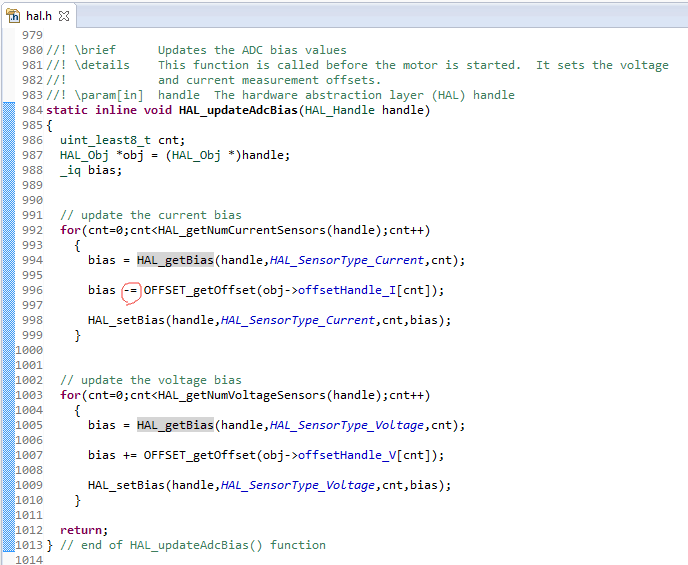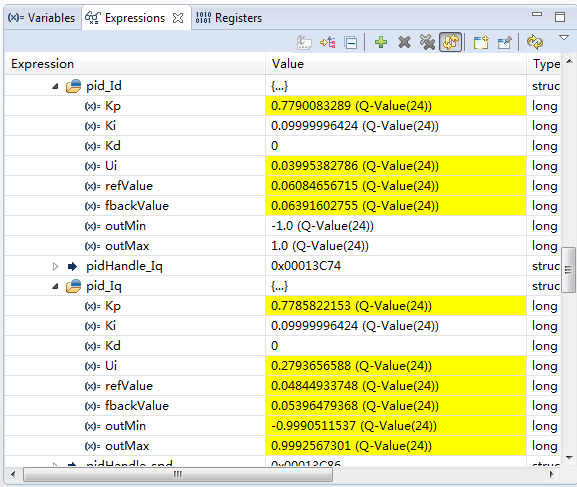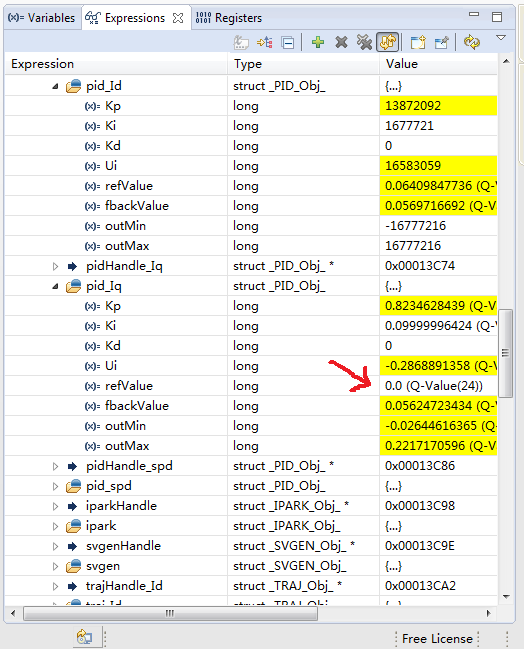Hello InstaSPIN community
We are running “lab13e” with our second board based on the DRV8301-69-KIT. This second board use three hall type current sensors to measure the phase current, while the first board measure the current through the low-side MOSFET like DRV8301-69-KIT.
We took some steps to adapt to the new board with phase current measurements:
Step1: set USER_IQ_FULL_SCALE_CUEENT_A to (125.0) and set USER_ADC_FULL_SCALE_CUEENT_A to (250.0). Because the output voltage of the current sensor is 0 to 3.3V while the detected current is -125A to 125A. The bias voltage is 1.65V.
Step2: set USER_NUM_CURRENT_SENSORS to (3)
Step3: set the bias from “+” to “-” in hal.h. Because when the sink current flows through the sensor, then through the low-side MOSFET and back to GND, the sensor output is a positive incremental voltage.
Step4: configure the ADC channel in hal.c.
The problem is that when we run the “lab13e”, after the current and voltage offsets, the next normal procedure is going to hold the motor at zero speed. But actually, the board become unstable and the three-phase half bridge circuit can be burned out.
Did we miss something or did something wrong in configuration?
Any advice will be appreciated.
Best regards.
Brant Zheng.





